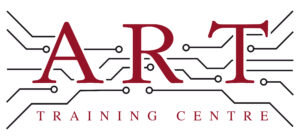Definition
Mixed Technology is a concept in electronics manufacturing that refers to the combination of different types of components, such as surface mount devices (SMDs) and through-hole components, on a single printed circuit board (PCB). This approach allows for greater design flexibility and optimises space on the PCB, making it easier to create complex electronic systems. It is essential for both manufacturing processes and rework practices in the electronics industry.
How It’s Used in the Industry
In electronics assembly, Mixed Technology involves several steps. First, a PCB is designed to accommodate both SMDs and through-hole components. During assembly, SMDs are typically soldered onto the board using reflow soldering techniques, while through-hole components are inserted and soldered using wave soldering or manual soldering methods. This combination allows technicians to leverage the advantages of both technologies, such as the compactness of SMDs and the robustness of through-hole components. Understanding Mixed Technology is crucial for both trainees and experienced professionals, as it enhances their skills in assembly, repair, and quality assurance processes.
History & Origins
Mixed Technology became common in electronics manufacturing during the late 1980s and early 1990s, as the demand for smaller and more complex electronic devices grew. The introduction of IPC standards, which set guidelines for PCB design and assembly, helped standardise practices involving mixed technologies. As surface mount technology advanced, manufacturers began integrating it with traditional through-hole techniques, leading to improved performance and efficiency in electronic products. This evolution marked a significant shift in manufacturing processes, making Mixed Technology a key aspect of modern electronics.
Variations
There are several variations of Mixed Technology, primarily based on the types and arrangements of components used. For example, some designs may favour a higher density of SMDs for compactness, while others may prioritise through-hole components for their mechanical strength. Additionally, the methods of soldering—such as selective soldering for through-hole components—can vary. Understanding these differences is essential for technicians, as it impacts the assembly process, reliability, and overall performance of electronic devices.
Modern Applications
Today, Mixed Technology is widely used in electronics production, especially in devices that require a combination of compact design and durability. Applications range from consumer electronics to automotive systems, where both surface mount and through-hole components play critical roles. This approach is vital for ensuring quality and reliability, as it allows manufacturers to meet IPC standards while optimising the assembly process. Furthermore, it remains a key focus in professional training, ensuring technicians are well-equipped to handle modern assembly techniques.
Practical Tips & Training
When working with Mixed Technology, it’s important to follow safety protocols, such as using appropriate personal protective equipment (PPE) and ensuring proper ventilation during soldering. Technicians should also employ effective inspection techniques, such as visual checks and automated optical inspection (AOI), to ensure solder joints are reliable. Familiarity with the right tools, like soldering irons and rework stations, is crucial. Structured training and certification in electronics are essential to mastering Mixed Technology, as they provide the foundational knowledge needed for quality work in the industry.


